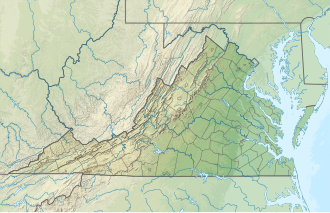This article needs additional citations for verification .(April 2010) |
| Jamestown National Historic Site | |
|---|---|
 A statue of John Smith, English explorer and most famous of the colony's early governors | |
| Location | 1368 Colonial Parkway, Jamestown, Virginia, United States |
| Nearest city | Williamsburg, Virginia |
| Coordinates | 37°12′35″N76°46′44″W / 37.20972°N 76.77889°W |
| Area | 20.63 acres (8.35 ha) |
| Established | December 18, 1940 |
| Governing body | Preservation Virginia (in partnership with NPS) |
| Website | Historic Jamestowne |
Jamestown National Historic Site | |
| Location | James City, Colony of Virginia |
| Built | May 14, 1607 |
| NRHP reference No. | 66000840 [1] |
| VLR No. | 047-0009 |
| Significant dates | |
| Added to NRHP | October 15, 1966 |
| Designated VLR | October 18, 1983 [2] |
Historic Jamestown is the cultural heritage site that was the location of the 1607 James Fort and the later 17th-century town of Jamestown in America. It is located on Jamestown Island, on the James River at Jamestown, Virginia, and operated as a partnership between Preservation Virginia (formerly known as the Association for the Preservation of Virginia Antiquities) and the U.S. National Park Service as part of Colonial National Historical Park.
Contents
- History
- Mission
- Preservation
- Significant structures
- Old Town
- New Town
- Monuments
- Voorhees Archaearium
- Gallery
- See also
- References
- External links
The site was designated Jamestown National Historic Site on December 18, 1940, and listed on the National Register of Historic Places on October 15, 1966. It was also designated a National Historic Chemical Landmark in 2007 by the American Chemical Society. [3] It is adjacent and complementary with Jamestown Settlement, a living history museum built run by the Commonwealth of Virginia to interpret the early colony.















